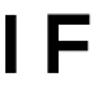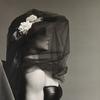From Betty Woodman's Ceramics to a Robert Rauschenberg Fabric Collage, Rarely Seen Collection Works Revealed in the Whitney's 'Making Knowing: Craft in Art'
- NEW YORK, New York
- /
- November 18, 2019
Making Knowing offers a fresh look at a prominent, ever-present thread of the Whitney's collection. The exhibition's title reformulates the historical tension often separating craft and fine art by leveling the distinction between the world of the handmade, "making," and the world of ideas, "knowing."
0n November 22, the Whitney opens Making Knowing: Craft in Art, 1950-2019, an exhibition that foregrounds how visual artists have explored the materials, methods, and strategies of craft. Beginning in the 1950s—at a time when many artists embraced fiber arts and ceramics to challenge the dominance of traditional painting and sculpture—Making Knowing moves through the next seven decades, presenting works that speak to artists' interests in domesticity, hobbyist materials, the decorative, vernacular American traditions, "women's work," and feminist and queer aesthetics.
Drawn primarily from the Whitney's collection, the exhibition features over eighty artworks in a variety of media, including textiles, ceramics, painting, drawing, photography, video, and large-scale sculptural installation. The more than sixty artists represented include Anni Albers, Richard Artschwager, Ruth Asawa, Njideka Akunyili Crosby, Robert Gober, Shan Goshorn, Harmony Hammond, Eva Hesse, Sheila Hicks, Mike
Kelley, Yayoi Kusama, Thomas Lanigan-Schmidt, Simone Leigh, Robert Morris, Claes Oldenburg, Pepön Osorio, Howardena Pindell, Ken Price, Robert Rauschenberg, Faith Ringgold, Miriam Schapiro, Arlene Shechet, Kiki Smith, Lenore Tawney, Peter Voulkos, Marie Watt, and Betty Woodman.
"One of the greatest pleasures and responsibilities that comes with digging into the Whitney's collection is the way it continually compels us to reevaluate our received ideas about taste, style, and even what counts as art at any moment," remarks Scott Rothkopf, Senior Deputy Director and Nancy and Steve Crown Family Chief Curator. "By focusing on materials and techniques associated with craft, Making Knowing will offer jolts of surprise, emotion, provocation, and discovery through an incredible range of works, more than half of which have never been on display in our galleries."
Making Knowing is organized chronologically and thematically, beginning with a gallery of works from the 1950s. Throughout this decade, artists such as Ruth Asawa, Robert Rauschenberg, and Peter Voulkos experimented with wire, scavenged fabric, and clay. Others, including Sheila Hicks, Lenore Tawney, and Ann Wilson, explored weaving, both on and off the loom, and painting on found quilts. By employing marginalized craft media, they challenged the power structures that determined artistic value. Presenting these artists together reveals the profound influence that craft had on abstraction during this period.
0n November 22, the Whitney opens Making Knowing: Craft in Art, 1950-2019, an exhibition that foregrounds how visual artists have explored the materials, methods, and strategies of craft. Beginning in the 1950s—at a time when many artists embraced fiber arts and ceramics to challenge the dominance of traditional painting and sculpture—Making Knowing moves through the next seven decades, presenting works that speak to artists' interests in domesticity, hobbyist materials, the decorative, vernacular American traditions, "women's work," and feminist and queer aesthetics.
Drawn primarily from the Whitney's collection, the exhibition features over eighty artworks in a variety of media, including textiles, ceramics, painting, drawing, photography, video, and large-scale sculptural installation. The more than sixty artists represented include Anni Albers, Richard Artschwager, Ruth Asawa, Njideka Akunyili Crosby, Robert Gober, Shan Goshorn, Harmony Hammond, Eva Hesse, Sheila Hicks, Mike
Kelley, Yayoi Kusama, Thomas Lanigan-Schmidt, Simone Leigh, Robert Morris, Claes Oldenburg, Pepön Osorio, Howardena Pindell, Ken Price, Robert Rauschenberg, Faith Ringgold, Miriam Schapiro, Arlene Shechet, Kiki Smith, Lenore Tawney, Peter Voulkos, Marie Watt, and Betty Woodman.
"One of the greatest pleasures and responsibilities that comes with digging into the Whitney's collection is the way it continually compels us to reevaluate our received ideas about taste, style, and even what counts as art at any moment," remarks Scott Rothkopf, Senior Deputy Director and Nancy and Steve Crown Family Chief Curator. "By focusing on materials and techniques associated with craft, Making Knowing will offer jolts of surprise, emotion, provocation, and discovery through an incredible range of works, more than half of which have never been on display in our galleries."
Making Knowing is organized chronologically and thematically, beginning with a gallery of works from the 1950s. Throughout this decade, artists such as Ruth Asawa, Robert Rauschenberg, and Peter Voulkos experimented with wire, scavenged fabric, and clay. Others, including Sheila Hicks, Lenore Tawney, and Ann Wilson, explored weaving, both on and off the loom, and painting on found quilts. By employing marginalized craft media, they challenged the power structures that determined artistic value. Presenting these artists together reveals the profound influence that craft had on abstraction during this period.
The works on display from the 1980s and 1990s exemplify how artists during this period looked at art and its relationship to devotional practices and often grappled with an ambivalence towards organized religion. Arch Connelly, Robert Gober, Mike Kelley, Lucas Samaras, Kiki Smith, and Rosie Lee Tompkins used wide-ranging materials including quilts, found and sewn textiles, candles, artificial flowers, and beads in artworks that reveal the relationship between the spiritual and the worldly. Working at the height of the AIDS crisis, several of these artists' attention to handcrafting objects attempted to provide an emotionally reparative experience in the absence of aid from the government or religious authorities.
A gallery dedicated to artwork from the mid-1990s to the present broadly addresses issues of the body and place. Liza Lou's monumental installation Kitchen, 1991-1996, is a handmade, life-size kitchen composed of sparkling beads. Through subject matter and materials, Lou combines the physical labor of domestic life and the painstaking making of an artwork. On view for the first time here are recent acquisitions by Shan Goshorn, Kahlil Robert Irving, Simone Leigh, Jordan Nassar, and Erin Jane Nelson.
"Many of the artists in Making Knowing have taken up historically marginalized materials in order to upend hierarchies that have persisted in art history and in museum collecting practices," explains co-curator Jennie Goldstein. Elisabeth Sherman, co-curator, continues, "Together they demonstrate that craft-informed techniques of making carry their own kind of knowledge, one that is indispensable to a more complete understanding of the history and potential of art."
Making Knowing offers a fresh look at a prominent, ever-present thread of the Whitney's collection. The exhibition's title reformulates the historical tension often separating craft and fine art by leveling the distinction between the world of the handmade, "making," and the world of ideas, "knowing."


100x100_c.jpg)













